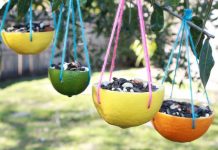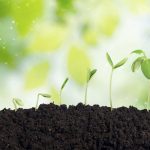 Water is the basic requirement of all plants. If you don’t give your plants an adequate supply of water, they will wither and die.
Water is the basic requirement of all plants. If you don’t give your plants an adequate supply of water, they will wither and die.
Improper watering methods can kill your plants and make their existence difficult. Just as too little water can kill plants, so can excessive amount.
While watering an outdoor plant is not a big worry, watering indoor plants need a special routine and treatment.
Other than bringing beauty and charm to the interior of your house, they also provide benefits like inhaling hazardous air and producing pure, fresh air.
Because both underwatering and overwatering can hamper the growth of indoor plants, it is essential to learn good watering techniques to maintain good plant health.
Tips for watering indoor plants:
- Most people think that any water will cater to the needs of plants, but this is false assumption, as tap water can cause suffocation and lead to plant death. Instead of tap water, rather use distilled or filtered water. If you only have access to tap water, try to get hold of some filtered water to reduce adverse effects.
- When you pour water into your indoor plants, don’t just check whether the surface of the plant is wet. Remember that the water has to reach the roots. If the roots do not get adequate amounts of water, the pot develops a high salt content and slows down plant growth.
- Pour water until it flows from the hole prepared at the bottom of the pot for better drainage. This has two benefits:Â it guarantees to wet the roots of the plants and washes away fertilizer residue from the soil.
- Provide an adequate drainage facility for the indoor plant pot. Never let the pot stay in the same place where the water has drained, as excessive amounts of water can cause your plant to die.
- Never let the drained water stand in the tray for longer than 2-3 days, as standing water can cause root disease in the indoor plant.
- Always test the soil when watering the plant, and check moisture levels beforehand. Press your finger into the soil and feel the moisture; if the soil sticks to your finger, the plant probably does not need water. The most preferable time for watering the plant is when no soil sticks to your hand.








